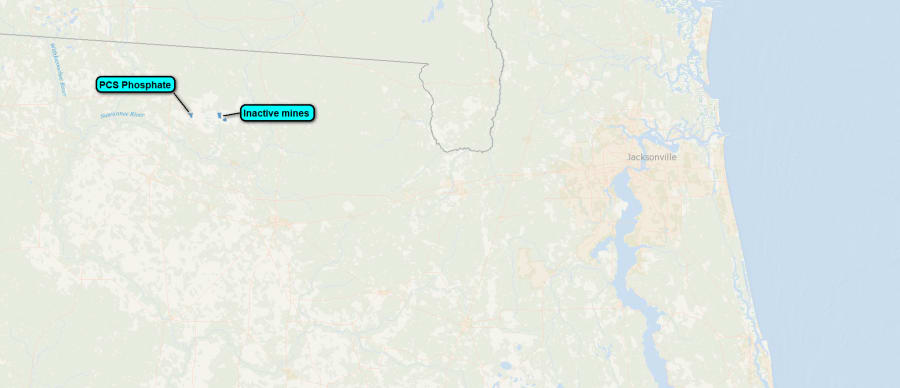JACKSONVILLE, Fla. – Phosphorus, a mineral that helps keep us healthy, can be found in everything from our food to our toothpaste.
Besides that, phosphorus also makes our plants grow. And you can find out exactly how much is in every bag of fertilizer you buy by checking the middle number on the nutrient label.
In Florida, we have an abundance of phosphate. There’s so much of it, in fact, that one percent of the state’s surface has been mined for the mineral. While most is extracted in central Florida, there’s a mining operation in Hamilton County, about 100 miles west of Jacksonville.

Phosphorus is not found naturally in its elemental form and, as a result, the process of getting it produces a lot of waste.
Extracting the ore requires an acid-wash bath to break up the phosphate rocks, which are tied together with other elements including radium and uranium. Most of the naturally occurring radioactive material ends up left behind in the acidic slurry waste.
These discarded byproducts become Florida’s mountains, which are known as gyp stacks or phosphogypsum stacks. These stacks tower hundreds of feet above Florida’s mostly flat topography.
Piney Point phosphate mine is about 80 acres, though some gypsum stacks cover 400 acres. Atop each one sits a pond of acidic water.
The slurry found on some of these stacks dries out, forming a crust that caps radioactive gases for an indefinite amount of time. But the environmental impacts of these stacks can be significant.
Here’s why: heavy metals or water from gyp stacks can filter downward through the stack, contaminating groundwater in the area. Even sinkholes have been known to cause breaches from beneath.
According to the Environmental Protection Agency, Piney Point does not have radioactive waste but there is concern about acidic water entering Tampa Bay and having a potential impact on drinking water wells.





